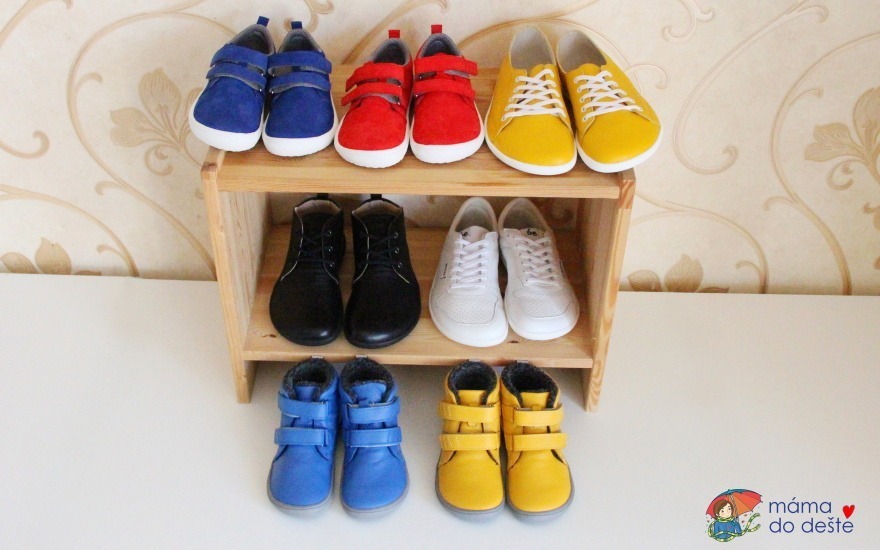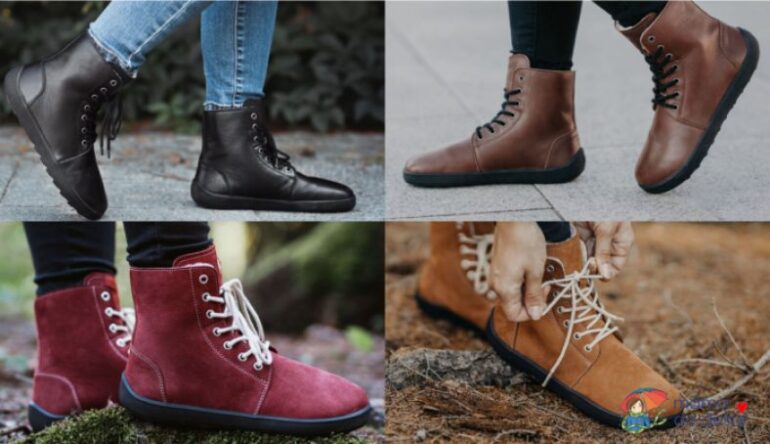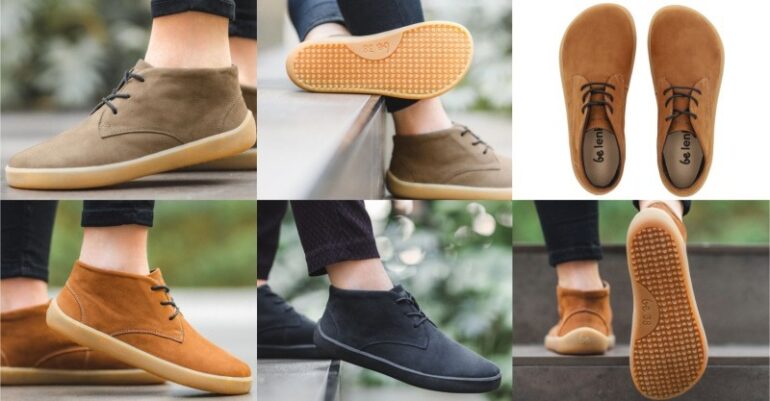What you didn’t know about barefoot shoes and 5 tips on how to choose them

How to choose barefoot shoes, where to buy them and which brand is the best? In the article you will find advice on choosing barefoot shoes so that you are satisfied with your purchase. I created the article based on my experience with shoes (both adult and children).
🏆UNIQUE AND LIMITED TIME PROMOTION. BIG DISCOUNTS AND SALES AT BAREBARICS.COM AND AT BELENKA.COM.🏆
Contents
How do you recognize barefoot shoes?
Barefoot shoes have a thin sole that bends well in both the longitudinal and transverse directions. The sole can be rolled up like an imaginary snail. The thickness of the sole varies between 1.2 and 5 millimeters. The sole of the shoe is completely flat, with no heel and no support (unlike minimalist shoes). The shoes are wide in the toe area. Models of barefoot shoes may differ in shape, width and material, but the principles of barefoot shoes remain the same. When you walk in shoes, your feet feel the surface you are walking on. How do you recognize barefoot shoes?
Footwear:
- It offers enough space for your fingers.
- It is flat and has no heel.
- It has a very thin and flexible sole (maximum 5 mm).
- It has a light weight.
- It does not deform the foot and preserves natural mobility.

5 tips for choosing barefoot shoes
Right at the beginning I wrote what barefoot shoes look like. Choosing barefoot shoes is basically the same as any other shoes, the only difference is that you are in the “barefoot” range of barefoot shoes. It depends on the appearance, material, size, width and thickness of the sole. Walking barefoot is important for healthy human development. If you spend all day in shoes, barefoot shoes may appeal to you precisely because of the large toe room and thin sole. Not all barefoot shoes are the same width and have the same thick sole. Some shoes have a sole thickness of only 1 millimeter, others 2 to 3 millimeters and still other models 4 millimeters. While some barefoot shoes are more suitable for narrow feet, others are made for wide feet.
Focus on:
- Material – Whether full leather, vegan or shoes made from a combination of leather and rubber or other rubber, there is a wide range of models to choose from. Shoes can be made from polyester microfiber, mesh, linen or cotton. The sole can be made of molded and molded rubber, rubber or leather.
- Sole – if you are new to barefoot shoes, you may prefer a sole with a diameter of 4 to 5 mm. But you can also choose shoes with the narrowest possible sole. It’s up to you. For example, in Belence you can find shoes with a 4mm sole, Feelmax has a 2.5mm sole, and Vivobarefoot has a 3mm sole.
- Shoe width – barefoot shoes also have different widths. This depends on how wide your own feet are. Some shoes fit a narrower foot, others fit a wider one. Be especially careful when choosing children’s shoes. Personally, I found that barefoot shoes that the seller described as “suitable for a wider foot (instep)” did not fit me. The narrower brands of children’s shoes include Bobux, while the broader brands include Livie&Luca.
- Size – As with regular shoes, choose the size according to the length of the foot or the length of the insole. E-shops with barefoot shoes have perfectly developed shoe size markings, you can also find size tables where you can find out how wide the shoe is in your size and how long the insole is. Use this information to choose the right shoe size.
- Lacing/Lacing/Fastening – You can choose between lace-up, lace-up and zip-up shoes.

How to choose a shoe size in the e-shop?
Trace your foot and measure the length and width at the widest part of the foot. Some barefoot shoe models have special numbering and may fit you in a smaller shoe size than you are used to. The size chart below will help you find the right shoe for you. If you buy shoes online, measure both feet carefully. The size of the two feet can differ by up to one size.
Shoes must be small so that they do not restrict the natural growth and development of the foot. Shoes that are too small can cause permanent damage to the foot. The size of children’s shoes is checked based on the insole and should be checked at least once a month for small children. If the shoe does not have a removable insole, you will need to measure the child’s foot with a tape measure or record it on paper. It is not advisable to squeeze the toe of the shoe as the child may wobble the toe. My absolute best shoes are the Be Lenka shoes – I bought them online without trying them on. I followed the table that came with the product. The shoes fit me perfectly, I’m satisfied.

If you start with barefoot shoes
When choosing your very first pair of barefoot shoes, barefoot shoe stores allow you to test how your new shoes feel on various uneven surfaces. The transition to barefoot shoes should be gradual. Wearing barefoot shoes puts strain on flabby muscles, and if you overdo it, your feet can hurt. During the winter months, you can practice barefoot walking at home. Children love the sensorimotor sensory carpet. On the carpet there are pebbles, sticks, ropes and cords, but also beans, for example. You can also practice walking on small wooden stilts. You can find a large selection of barefoot shoes in the Belenka.com e-shop.
If you are not used to barefoot shoes, you should try them first. The surface is softer, is not subject to the same temperature fluctuations as city pavement and is more interesting for your feet. You should walk gradually with barefoot shoes, starting with a few hundred meters per day. The biggest mistake is to walk a few kilometers through the city in barefoot shoes on the first day. Why shouldn’t you do that? Because you walk differently in barefoot shoes than in conventional shoes with wedges and wider soles. You are used to walking on your heel, and barefoot shoes are not designed for this type of walking. The change for your feet can be so uncomfortable and significant on hard urban surfaces that walking can be painful. To start, you should walk slowly, pedaling with your whole foot and with flexibility. The heel should not hit the ground hard as such steps hurt. Practice gradually and slowly. Strengthen your ankles naturally whether you wear summer sandals, ballet flats or hiking shoes.

At first I was given shoes with very thin soles and they didn’t fit me. I then chose the Be Lenka shoes, which have a 4mm thick sole that fits me well. If the sole is too thin for someone, you can get insoles for the shoes, which are available directly in the Belenka.com store, as well as the beautiful shoes – you can see them in the photos.
Advantages and disadvantages of barefoot shoes
On the one hand, there are physiotherapists who see great advantages in barefoot shoes because the foot has more freedom than in conventional shoes. Walking barefoot in healthy feet promotes their perfect function. According to physiotherapists, barefoot shoes allow better movement, greater freedom and a freer stance of the foot. On the other hand, orthopedists see a big disadvantage in loose ankles, sagging arches, heel strikes that have no protection in the form of foot impact on the ground.

Barefoot shoes yes or no?
If your feet hurt from barefoot shoes, even if you walk just a few hundred meters a day, pedal lightly, exercise on soft surfaces, something is wrong. Maybe you’re running too fast and on unsuitable terrain. You are not allowed to walk on concrete with your heel over your toes. Maybe your shoes fit you initially and the problems don’t show up until a few weeks later because you didn’t train properly. At the beginning you shouldn’t walk in the shoes for too long. Do not wear the shoes all day. Your calves, feet, and heels may be very sore. Another reason could be health problems and weak feet. Your ankles could swell, your shoulder blades could hurt, you could have strained calves. If you have extremely flat feet, bunions, or hammertoes, changing your shoes won’t solve the problems in a few days. If your feet hurt, try massaging them regularly, changing the terrain for training, shortening the wearing time.

Before you buy barefoot shoes, you should know…
- The shoes are not suitable for people with health problems in the foot or foot area. If you have extremely flat feet, your feet may hurt. Try consulting a professional.
- The shoes were originally designed to be worn for short periods of time and are best worn outdoors.
- Walking around the city in shoes all day is not ideal.
- You need to get used to walking in barefoot shoes (train for it).
- Don’t go over the heel.
Where can you buy barefoot shoes?
The best way to buy barefoot shoes is online at Belenka.com.
♥ I WISH YOU A GOOD PURCHASE♥
Photo: Mamaimregen.de





